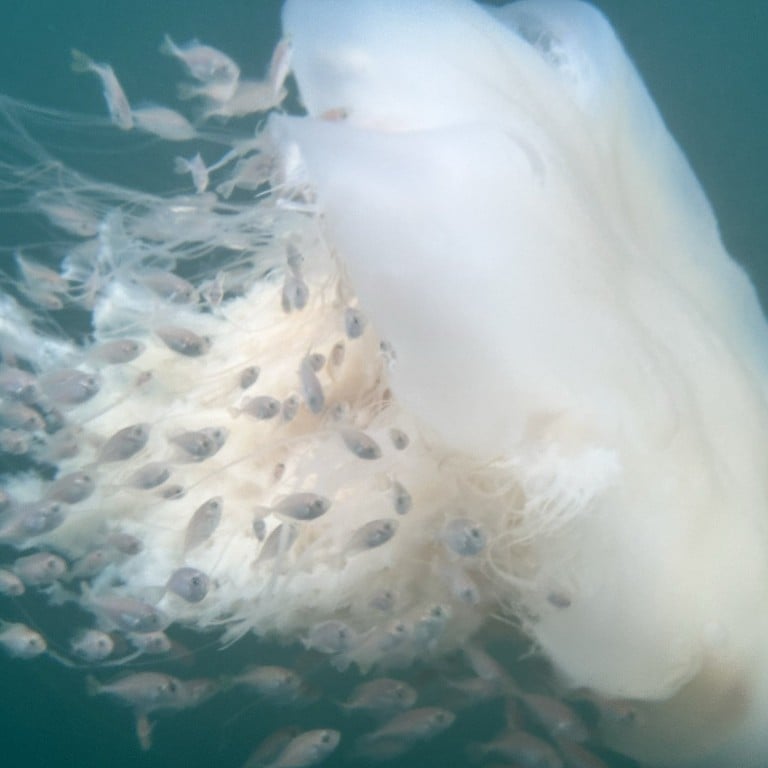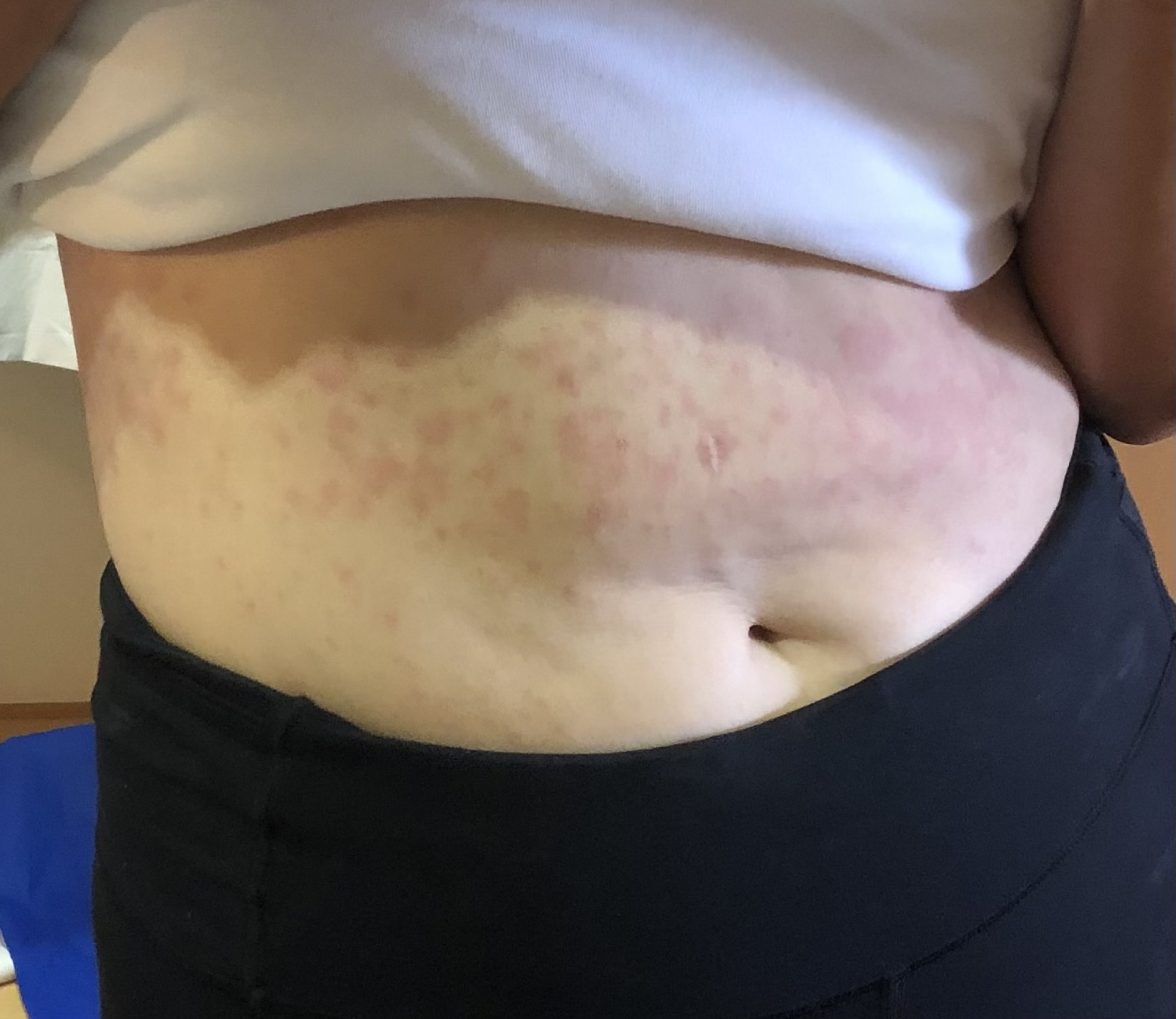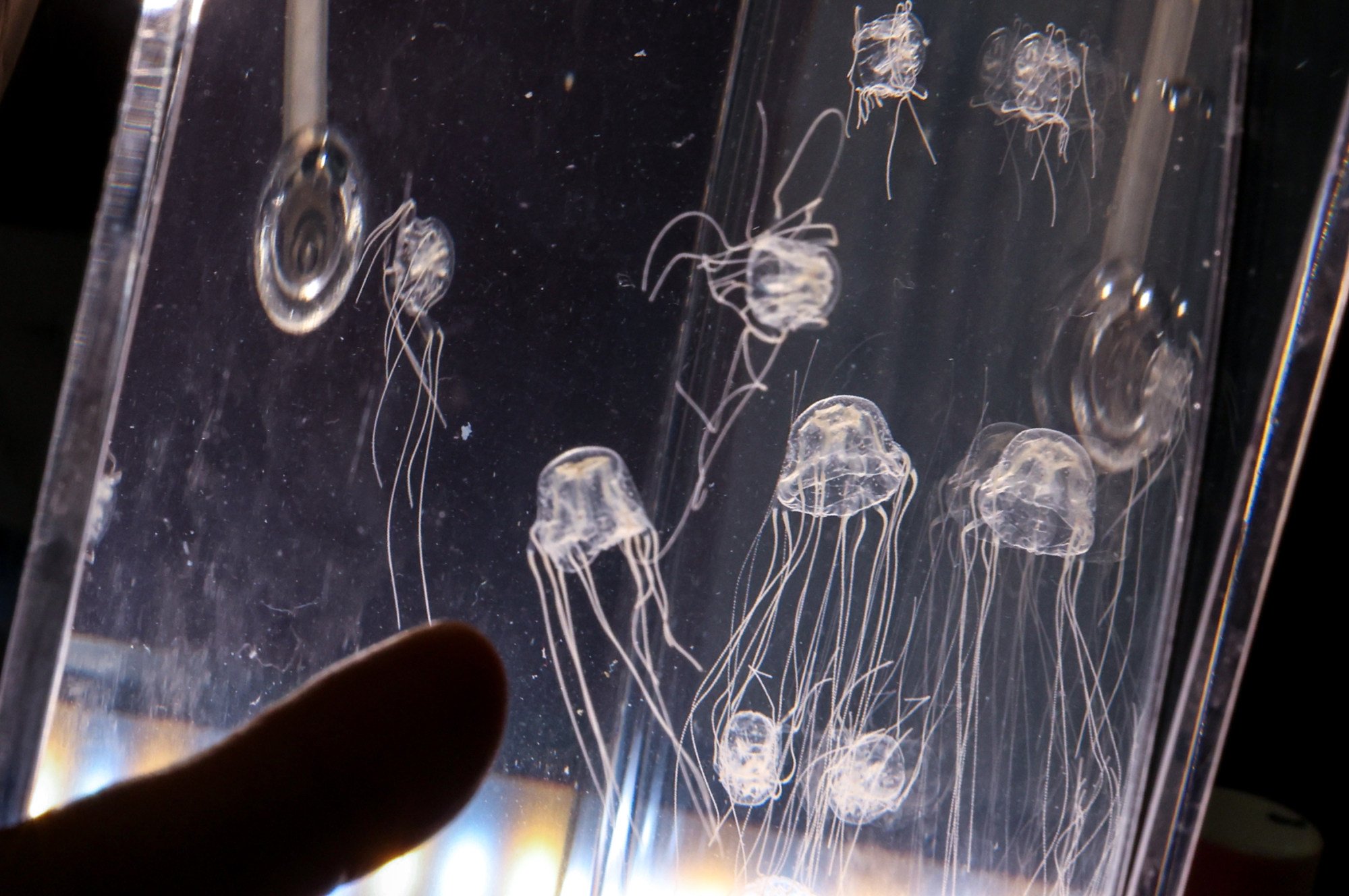
Explainer | Jellyfish stings: symptoms, treatment dos and don’ts, and when to seek medical attention – experts and swimmers explain
- Swimming in the ocean carries the risk of being stung by jellyfish, and those who have experienced them share the symptoms they suffered, from welts to swelling
- Expert advice outlines the best treatments and the severe symptoms to beware of, and researchers reveal why jellyfish and their stings remain misunderstood
Joanna Mak was swimming in open water on the south side of Hong Kong Island a couple of years ago when a jellyfish stung her lips and chin.
Feeling “a little pain”, Mak kept on swimming. But several hours later her lips swelled up and blistered, so she sought hospital treatment.
“They looked like sausage lips,” laughs Mak. “It was difficult to close my mouth and I couldn’t talk or eat properly and had to drink through a straw.”
Mak, a surgeon, received an anti-inflammatory injection, and the swelling subsided after three days. “I got stung again last week but that time I didn’t have a reaction.”

Australian-born Peter Nelson was stung on the neck and legs while swimming in Hong Kong in January 2022. He wasn’t able to identify the species but says in July this year he was stung by a ghost jellyfish (Cyanea nozakii), a common species found in Hong Kong waters.

“It feels like you’re touching human hair underwater,” Nelson says.
Edie Hu, an open water swimmer who in 2018 swam around Hong Kong Island in just over 12 hours to raise money for charity, has been stung a handful of times by jellyfish, but her reactions haven’t been serious.
“If they wrap around your face or legs it can sting more and leave marks,” she says.
Pay attention to your body’s messages: if you start to experience severe symptoms, seek medical attention
Hu says the worst stings she experienced were caused by sea lice – the microscopic larvae of jellyfish.
“I had red welts on my stomach for a week,” she says, adding that females are more prone to sea lice stings because they get trapped in one-piece swimming suits.
For anyone who spends a lot of time in the waters around Hong Kong – especially open water swimmers – jellyfish stings often come with the territory.

The stings occur as tentacles that trail from the jellyfish’s body inject venom from thousands of microscopic barbs into the unlucky swimmer.
Gleneagles Hospital Hong Kong says symptoms of a sting include red welts, pain and blistering. In severe cases, people may experience nausea, a rapid pulse or breathing difficulties.
“Pay attention to your body’s messages: if you start to experience severe symptoms, or if the sting is on your face or in your eyes, visit the emergency department to seek medical attention,” Gleneagles Hospital advises.

Hong Kong’s Fire Services Department advises anyone stung by a jellyfish to stay calm, get out of the water as quickly as possible and not touch the stung area with bare hands, to avoid secondary stings.
It advises to rinse the stung area with clean seawater and then soak the area in hot water of about 42 degrees Celsius (108 degrees Fahrenheit) for 20-45 minutes to ease the pain.
In the case of a severe reaction, it is advised to seek medical attention.

“Background-wise, more research is finding that some jellyfish stings do not respond to this general treatment, however this is the ideal sequence, especially since most people will not know what stings them.”
According to the Mayo Clinic, a non-profit American medical centre, there’s also a list of do nots when it comes to jellyfish stings: do not scrape out stingers, do not rub stung areas with a towel, do not rinse stung areas with human urine or cold or fresh water, and do not apply alcohol to them.

The Hong Kong Hospital Authority, which does not keep records of jellyfish stings, says medical professionals look at individual cases to decide whether to use a topical pain reliever or anti-inflammatory medication to reduce the pain of the sting, or an antihistamine to control swelling.
“Many stings are likely taken care of on-site, so there is a lack of data,” Terenzini says.
The HKJP founder says his organisation’s goals are to “increase understanding of jellyfish, their impact in local waters, and potentially enhance water sports safety by determining what causes jellyfish to bloom [rapidly increase in numbers].”
Terenzini also wants to give the often-feared jellyfish an image overhaul by reducing the fear factor and highlighting their vital role in marine ecosystems – they are key to the diet of more than 160 species of fish.

